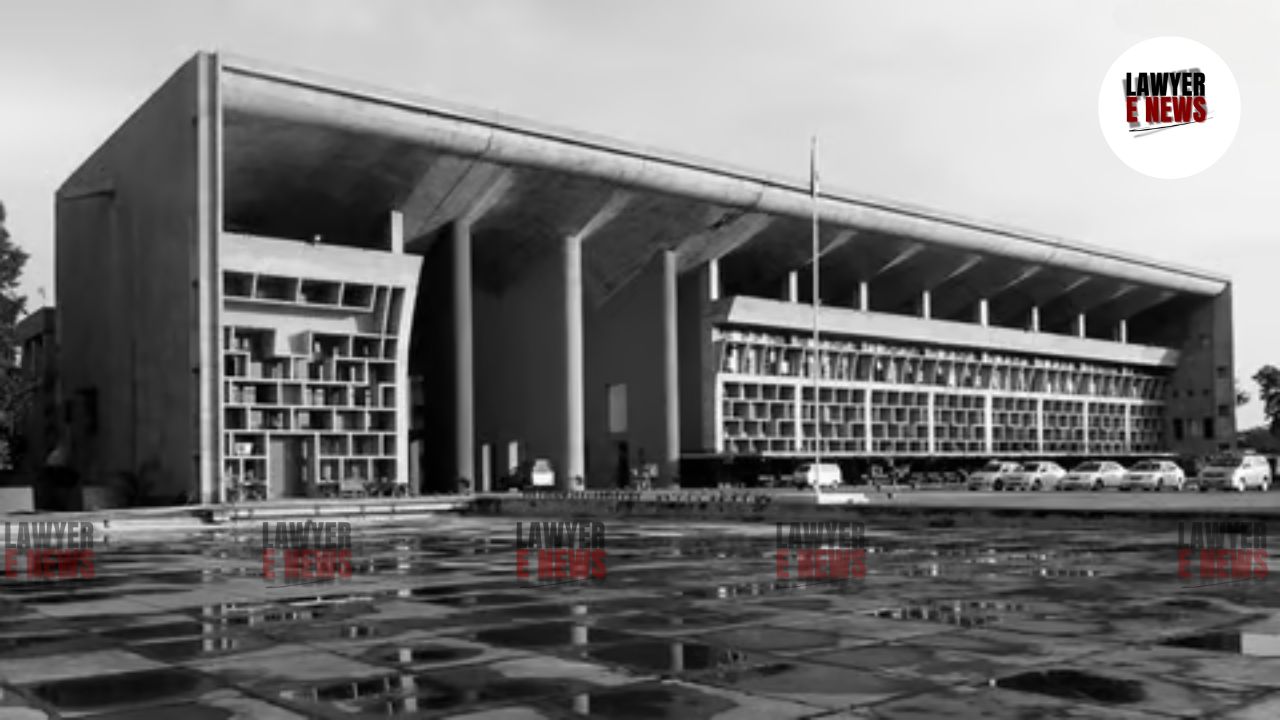-
by Admin
17 December 2025 10:13 AM



"The chain of circumstantial evidence is complete and points exclusively to the guilt of the accused," held the Punjab and Haryana High Court, affirming the life sentence awarded to Neelkanth for the murder of his wife.
"Circumstantial Evidence Proves Guilt Beyond Reasonable Doubt," Rules High Court
"Where direct evidence is absent, circumstantial evidence must form a chain so compelling that it rules out all other hypotheses except the guilt of the accused," the Court observed while rejecting the defense of suicide raised by the appellant.
Punjab and Haryana High Court dismissed the appeal filed by Neelkanth, who challenged his conviction under Sections 302 and 201 of the Indian Penal Code (IPC). A division bench of Justice Sureshwar Thakur and Justice Kuldeep Tiwari upheld the trial court's findings, ruling that the prosecution had successfully proven its case through circumstantial evidence, electronic records, forensic analysis, and the accused's own disclosure statement.
The appellant was convicted of murdering his wife by forcing her to ingest organophosphate pesticide and attempting to cover up the crime. However, the trial court had acquitted the appellant of charges of rape (Section 376 IPC) and caste-based atrocities under the Scheduled Castes and Scheduled Tribes (Prevention of Atrocities) Act, 1989. The state did not appeal these acquittals.
The case arose from an incident on July 14, 2017, when the dead body of Rani, wife of Phool Kumar, was found near the bus stand of Kuchhpura village in Haryana. Phool Kumar, a member of the Scheduled Caste community, alleged that his wife had been raped and murdered, and her body had been discarded to conceal the crime.
During the investigation, it was revealed that the accused, Neelkanth, had purchased a poisonous pesticide shortly before the incident. CCTV footage from a local shop showed the appellant traveling on a motorcycle with the deceased hours before her death. The forensic examination confirmed organophosphate pesticide as the cause of death, and the accused's disclosure statement led to the recovery of incriminating evidence, including the pesticide container and the motorcycle used.
The trial court convicted the accused for murder and destruction of evidence, sentencing him to life imprisonment for murder under Section 302 IPC and two years’ imprisonment for destroying evidence under Section 201 IPC. Both sentences were to run concurrently.
The Court reiterated that circumstantial evidence is sufficient to establish guilt if it forms an unbroken chain leading to only one conclusion: the accused’s culpability. The prosecution successfully established the following links in the chain:
CCTV Footage: The accused was seen traveling with the deceased on a motorcycle shortly before her death.
Purchase of Poison: The shopkeeper (PW-2) confirmed that Neelkanth had purchased a bottle of pesticide from his store, which was later recovered from the crime scene.
Forensic Evidence: The viscera examination revealed the presence of organophosphate pesticide, which matched the chemical composition of the poison purchased by the accused.
Disclosure Statement and Recovery: The accused’s signed disclosure statement led to the recovery of the motorcycle and the pesticide container from a concealed location.
The Court held that these circumstances, taken together, proved the appellant’s guilt beyond reasonable doubt.
While acknowledging procedural lapses in certifying the CCTV footage under Section 65-B of the Indian Evidence Act, the Court ruled that these defects did not undermine the footage’s corroborative value. The bench relied on additional evidence, including witness testimony and forensic reports, to validate the footage's authenticity.
A procedural defect in certification does not automatically render electronic evidence inadmissible when corroborated by other independent evidence," the Court stated.
The appellant argued that the deceased had committed suicide, citing the absence of external injuries and a history of alleged harassment by others. The Court rejected this defense, noting:
Purchase of Poison: The accused’s act of purchasing pesticide shortly before the incident demonstrated premeditation.
Medical Evidence: While no external injuries were found on the deceased’s neck or cheeks, the peeling of skin observed during the post-mortem suggested possible force used to administer the poison.
Mens Rea: The appellant’s motive was evident from his disclosure statement, where he admitted to poisoning his wife to implicate another person (Jagdish) with whom he had a grudge.
"The evidence strongly suggests that the poison was forcibly administered by the accused, ruling out any possibility of voluntary consumption by the deceased."
The Court attached significant weight to the accused’s disclosure statement, which led to the recovery of the motorcycle and pesticide container. Referring to the principles under Section 27 of the Indian Evidence Act, the Court observed:
"A disclosure statement that leads to the recovery of incriminating material from a location exclusively within the accused’s knowledge is admissible and carries substantial evidentiary value."
The defense failed to impeach the credibility of the marginal witnesses or prove that the recoveries were planted.
The High Court concluded that the prosecution had established the appellant's guilt through a compelling chain of circumstantial evidence, forensic findings, and recoveries. The Court dismissed the appeal and upheld the trial court's judgment, including the following sentences:
Date of Decision: November 5, 2024
